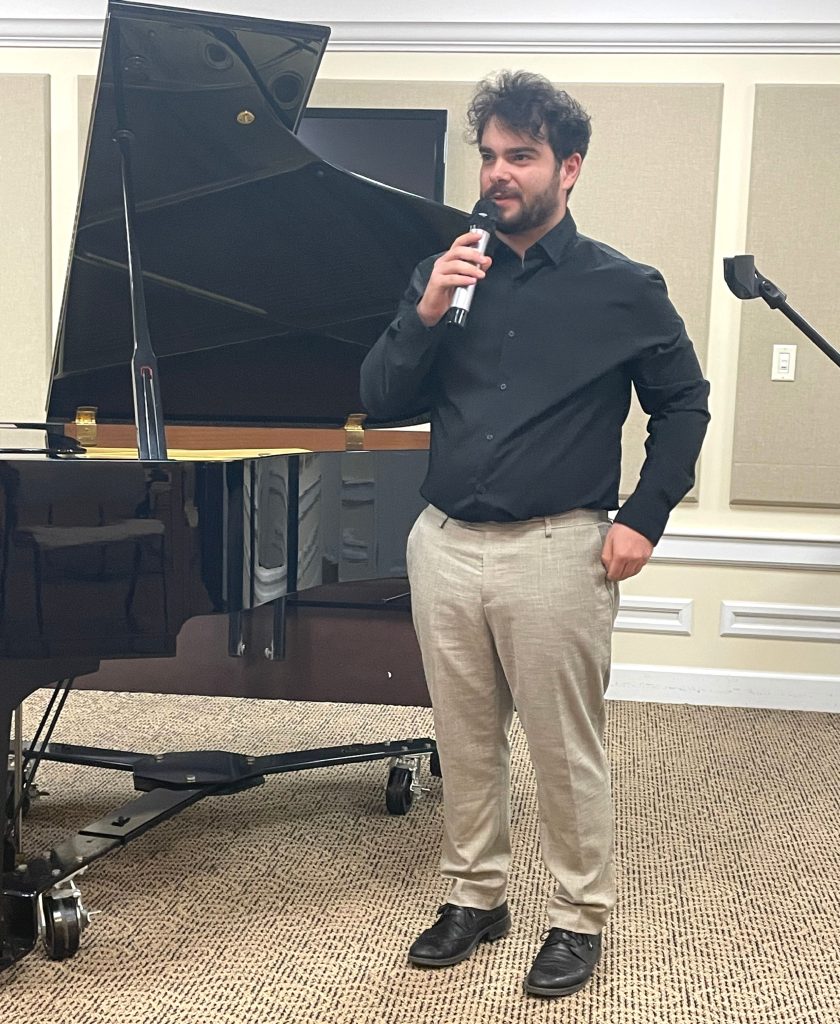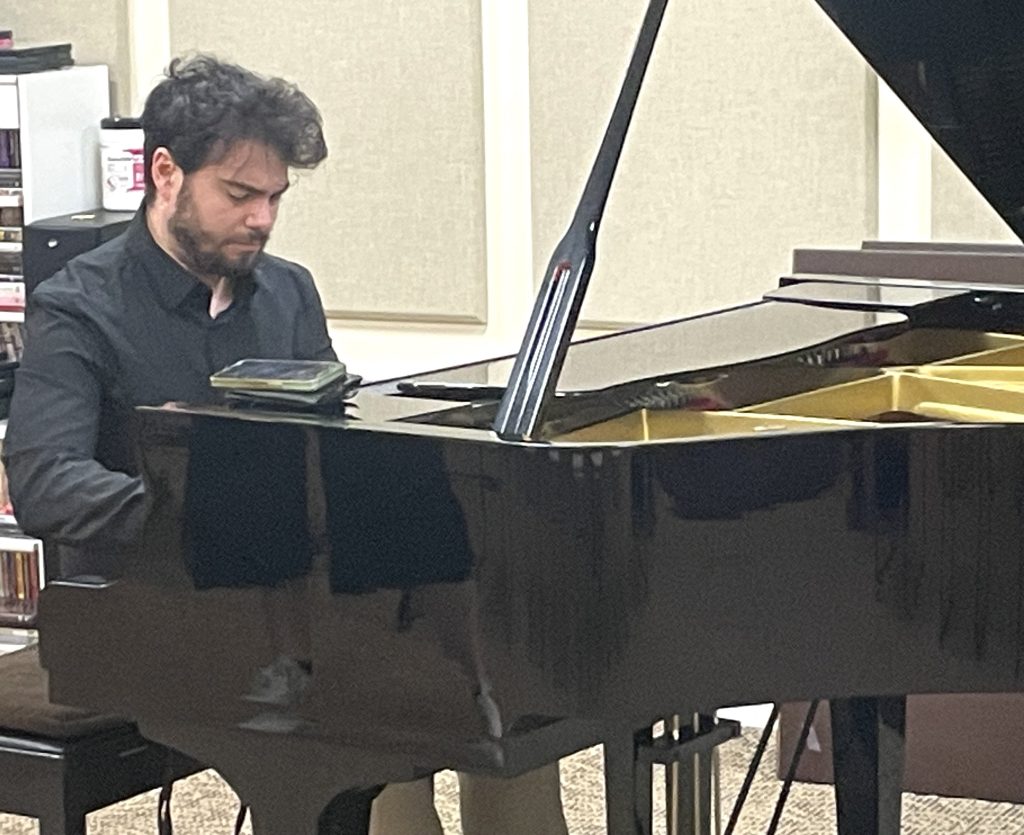
by Kevin T McEneaney
Nicolò Tuccia, a pianist from near Bologna who has garnered over fifty awards in national and international competitions, briefly landed in NYC after performing in San Francisco. He has performed all over Europe and even in London’s famous Steinway Hall. Last weekend, he performed at Arbor Ridge Nursing Home, Smithfield Church, and the prestigious Klavierhaus in Manhattan. He is a master pianist who comfortably excels in difficult work as he expresses deep emotions.
Between 1827 and 1846, Frédéric Chopin wrote 21 Nocturnes for solo piano. The Nocturne had been invented in St. Petersburg by the Irish pianist John Field, who adapted Irish sentimental harp music to the piano. Niccolo Tuccia performed Nocturne No. 9, 1 and 2. These two are the most famous Nocturnes of them all.
Nocturne No. 1 in B-flat minor, Op. 9 in 6/4 meter offers an ambient, delightful freedom. Sumptuous arpeggios aerate the composition. The ternary format provides a satisfactory arc.
Nocturne No. 2 in E-flat major, Op. 9 featured Nicolo’s fingers flying as he captured the astonishing suspense of the 12/8 meter with deft panache in larghetto format. I sat on the edge of my seat, thrilled throughout by the surprising freedom of his right hand over the keys. The gradual and sudden shifts of mood offered awe and inspiration. This was a transcendent thrill! This piece was composed when Chopin was merely twenty years old. Amid lyric freedom, there is increasing ornamentation that rises to a sensational climax. I have heard this work played before, but not with such exquisite touch!
Byron’s poetic (and political) ballads were popular in Europe, especially in Poland, where many excellent native poets embraced the form. Chopin invented the musical ballade with repeated balladic motifs that featured local folk music. Franz Liszt wrote two ballades, the second, Ballade in B Minor (1853), written four years after Chopin’s death, being the more successful. Liszt conceived the work as an allegorical, political tribute to both Lord Byron and Chopin, adopting the Greek myth of Hero and Leander: Byron being a noted, formidable figure who once swam the Hellespont.
The ballade refrain is in the water. Hero swims to his beloved Leander on several occasions but eventually drowns in a storm. Oceanic refrains rise increasingly with dramatic excitement, and it was here in the rising nuance that Nicolo excelled. The work is a tribute to the democratic populism espoused by Byron, yet it is also a lament for the failure of the then-current period to follow Byron’s democratic populism: hence its contemporary political resonance.

Moment Musicaux, Op. 16 (1894) by Sergei Rachmaninoff is an early work that displays considerable advancement of technique with the rise and fall of introspective dramatic themes that reflect considerable anguish in an evolutionary format whereby Each Moment musical reproduces a musical form that is a transformation of a previous musical era. The forms that appear in Rachmaninoff’s incarnations are: nocturne, songs without words, barcarolle, virtuoso étude, and theme and variations. This is akin to an evolving portrait of an artist who masters the many-colored rainbow of interior contemplation. Here, Nicolo was a master of dramatic transitions that reverberate in one’s head long after the concert.
Nicolo concluded with two Preludes by Claude Debussy, Les Colines d’Anacapri and Des Pas sur la neige. Artistic inspiration may arrive in many unusual forms, especially when one is ill and housebound. The Hills Anacapri was apparently inspired by the label on a bottle of Italian wine! The label featured two bells, a habanera, and a tarantella. This Prelude is a charming depiction of young girls singing in a seaside Neapolitan café, one of the twenty-four images in the series of imagistic fragments. In contrast, Footprints in the Snow, according to Debussy, “must have the sonorous value of the depths of a sad, frozen landscape.” The light snap rhythm implies the falling of individual snowflakes (of which none are identical) on the landscape.
And so, the concert concluded with a feeling of each note falling on one’s ears, as if each note were to lead one to a sleepy and satisfactory dreamscape….
